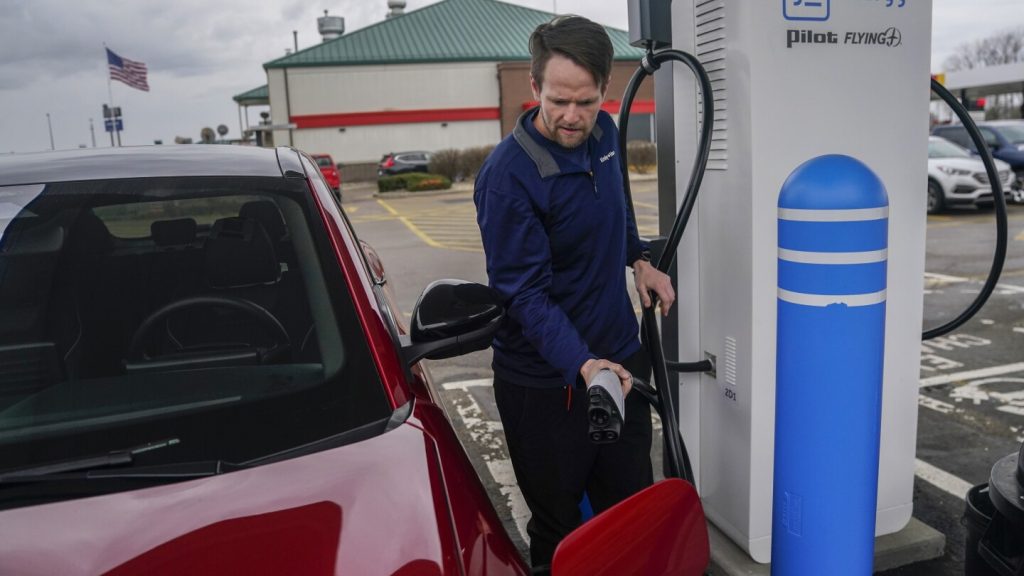A 32-year-old civil engineer named Liam Sawyer recently embarked on a camping trip with his newly purchased red Ford Mustang Mach-E, an electric SUV. Sawyer chose the Mustang Mach-E for its technology and range, which he believed was sufficient for his needs. Prior to the trip, he researched convenient charging stations between his home in Indianapolis and the Allegheny National Forest in western Pennsylvania. During his journey, he stopped at a new public charging station at the Pilot Travel Center in Ohio. The station, equipped with four chargers, allowed him to power up his EV while taking a break to buy food and drinks and use amenities. This initial charge cost Sawyer around $20.
The Ohio charging station was established as part of the National Electric Vehicle Infrastructure program, a $5 billion initiative included in the bipartisan infrastructure bill signed by President Joe Biden in November 2021. The program aims to create a national network of 500,000 publicly available chargers by 2030 to encourage drivers to shift away from gasoline-powered vehicles and reduce global warming. Recently, the Biden administration announced ambitious automobile emissions standards to cut pollution from passenger vehicles, further emphasizing the need for increased sales of electric vehicles and plug-in hybrids.
The Biden administration stated that the federal charging program is progressing as planned, with states like Ohio, New York, Pennsylvania, and Hawaii opening stations funded by the program. Federal Highway Administrator Shailen Bhatt explained that the focus in the first two years was on setting rules and plans, and now efforts are transitioning into bringing chargers online. Additionally, the administration awarded $623 million in grants to states, local governments, and tribes to fund 47 EV charging stations and related projects in 22 states and Puerto Rico, with plans for 7,500 charging ports. Private companies like Walmart have also committed to building a network of affordable fast-charging stations for EVs.
Despite these efforts, some experts suggest that 500,000 public chargers may not be sufficient to meet the climate goals outlined by the Biden administration. The Department of Energy’s National Renewable Energy Laboratory estimates that the U.S. will require 1.2 million public chargers by 2030, a significant increase from the current 175,000 charging ports available. Concerns about charging stations, driving range anxiety, and cost remain key barriers to widespread EV adoption among Americans. A survey from 2023 highlighted that 80% of respondents cited a lack of charging stations as a reason for not buying an electric vehicle.
As the federal charging program continues to rollout, the Biden administration aims to have chargers every 50 miles along U.S. interstates. Major charging networks like Tesla, EVgo, and Electrify America are focusing on strategic locations like shopping centers and gas stations. While the goal is to expand the infrastructure to support EV adoption, challenges in permitting, approvals, and upgrades can cause delays in station deployment. Despite these challenges, drivers like Sawyer remain optimistic about the future of EV infrastructure and the transition to electric vehicles as a cleaner mode of transport. Both public and private sector initiatives are working towards increasing accessibility to charging stations and accelerating the shift towards sustainable transportation.


